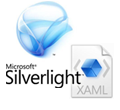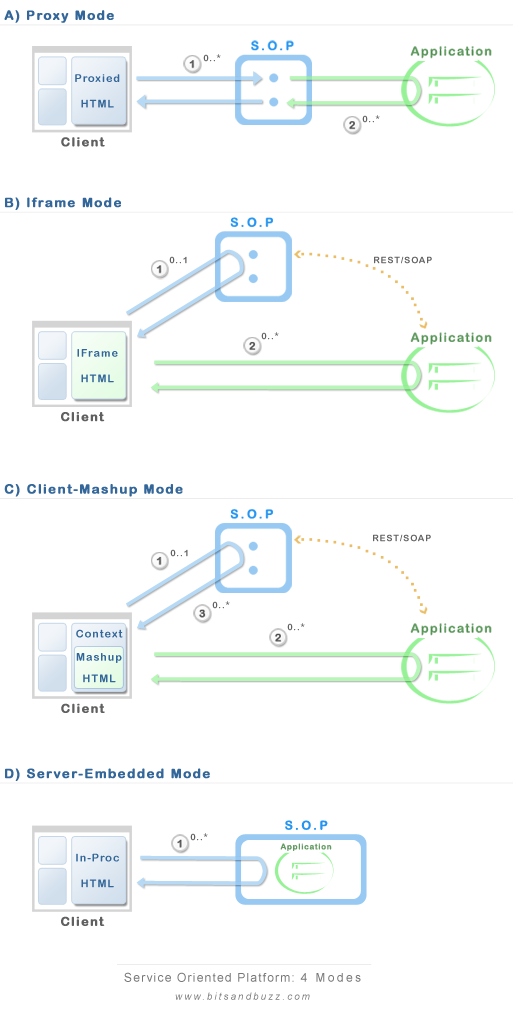Despite some worldwide economic difficulties, 2008 might be a very dynamic year for the technology industry. I see two main reasons. First, the economic conditions might favor some interesting acquisitions, in the consumer as well as in the enterprise spaces. Second, I think the enterprise technology industry is going to work actively to leverage the best of Web 2.0 for their business. In other “buzzy” words, 2008 is the start of Enterprise Web 2.0.
1) Facebook to make big push to Mobile
 This is more of an opinion than a prediction, but I think that Facebook should make a big push in the mobile space. Apple reinvigorated this space from a consumer point of view; however, mobile applications are still hard to develop, integrate, or promote. Facebook has the reach, the technology, and the platform experience to create an online mobile platform allowing application providers to build, integrate (i.e., mashup), and deploy (i.e. provisioning) mobile applications.
This is more of an opinion than a prediction, but I think that Facebook should make a big push in the mobile space. Apple reinvigorated this space from a consumer point of view; however, mobile applications are still hard to develop, integrate, or promote. Facebook has the reach, the technology, and the platform experience to create an online mobile platform allowing application providers to build, integrate (i.e., mashup), and deploy (i.e. provisioning) mobile applications.
The challenge to build a true online mobile platform would be to take some distance from the “PC world” and focus the mobile specific issues, constraints, and value chains.
Google might be another challenger in this space; however, their strategy seems to be very device-centric (with Android), which will take longer to unfold.
2) Ning to be acquired by Yahoo! (or Microsoft)
 On the consumer portal front, I predict that Ning will get acquired by Yahoo! (or Microsoft). TechCrunch predicted that it would be Google, but I think that Google has its hands too full with Open Social to buy yet another “framework.”
On the consumer portal front, I predict that Ning will get acquired by Yahoo! (or Microsoft). TechCrunch predicted that it would be Google, but I think that Google has its hands too full with Open Social to buy yet another “framework.”
Yahoo! might want to make an aggressive move in the social network space in a novel way. A Ning acquisition might allow them to differentiate themselves, at least from a developer standpoint. In a way, Yahoo! could become the social network platform for the rest of us.
Note: Google might very well buy Bebo.com to deepen its US/EU social network presence.
3) Apple to revolutionize the media distribution market (iTunes 2.0)
 |
Well, this one is not hard to predict, but I think that Apple’s move to online video will become big. The WGA strike definitely works to Apple’s advantage. While Apple’s video rental numbers might look relatively low by the end of 2008, when compared to Blockbuster, I think Apple is going to be in a position to dominate this market (or at least, create its own). |
The big question is, how will Apple be able to get into the living room? Apple TV?
4) Apple to acquire Adobe
 This is an easy and now popular prediction. Despite the fact that Apple has a lot on its 2008 plate, I think, as many others do, that it would be a good strategic move for Apple to “merge with” (i.e. buy) Adobe. Apple is now, more than ever, the king of user experience from a consumer point of view. It would make perfect sense for Apple to also become the tools leader for creating these user experiences.
This is an easy and now popular prediction. Despite the fact that Apple has a lot on its 2008 plate, I think, as many others do, that it would be a good strategic move for Apple to “merge with” (i.e. buy) Adobe. Apple is now, more than ever, the king of user experience from a consumer point of view. It would make perfect sense for Apple to also become the tools leader for creating these user experiences.
The irony of such an acquisition would be that, with the newly-acquired tools and runtime (Adobe Flex/AIR), Apple developers would be able to build and deploy applications for Microsoft Windows (as Microsoft developers used to do with Microsoft tools for Apple computers).
5) Microsoft to open SilverLight and/or XAML
 2007 was the SilverLight year, in which Microsoft first attempted to take over the Flash market. SilverLight is mostly based on an XML language called XAML which is also used to build desktop applications with the WPF runtime. However, while some XAML clones already exist (e.g., Wayne’s post and eFace) none of these technologies are officially open.
2007 was the SilverLight year, in which Microsoft first attempted to take over the Flash market. SilverLight is mostly based on an XML language called XAML which is also used to build desktop applications with the WPF runtime. However, while some XAML clones already exist (e.g., Wayne’s post and eFace) none of these technologies are officially open.
I predict that Microsoft will either standardize the XAML language or even open-source the SilverLight code. It won’t do any harm to Microsoft, and will definitely counter some common attacks against these technologies.
Note: In the
XAML Wikipedia definition, you might read the following:
“As XAML is simply based on XML, developers and designers are able to share and edit content freely amongst themselves without requiring compilation.”
Well, given my experience on the subject, I am not sure that XML in itself improves the designer-developer workflow. Better and more integrated tools will do so. The main challenge is that the design semantics are drastically different from the programmatic ones. In other word, a “Designer Component” does not necessarily map to a “Programmer Component.”
6) Oracle to buy RedHat or SalesForce.com
 |
I was going to say BEA, but this would be cheating now. I think the next one could be either SalesForce.com or RedHat. Oracle has been pretty aggressive in its Linux strategy in the last couple of years. A RedHat acquisition would be definitely in-line with Oracle’s disturb-before-striking acquisition strategy. RedHat new CEO would probably facilitate such acquisition.
|
I also think that online platforms for enterprise software/service companies are going to become strategic in 2008. SalesForce.com, with its force.com platform, is being aggressive about this, and can become the Facebook for enterprise applications. I am not sure that Oracle is ready to bet big on SaaS or PaaS (Platform as a Service) yet. But P/SaaS is definitely going to continue to grow, and might even become more relevant in economic downturn.
Anyway, both of these acquisitions are probably just a matter of time, and 2008 will tell us more.
7) Enterprise Web 2.0
 As mentioned in the introduction to this post, I think that 2008 will be a real start for Enterprise Web 2.0, the buzz-word for leveraging the best of the Web 2.0 technologies and paradigms to make enterprise internet applications more usable (i.e. RIA/AJAX), simpler, and collaborative (i.e. social). In this context, SaaS and PaaS (i.e., Platform as a Service) are going to be critical. (see Dion Hinchcliffe’s 12 predictions for Enterprise Web 2.0 in 2008)
As mentioned in the introduction to this post, I think that 2008 will be a real start for Enterprise Web 2.0, the buzz-word for leveraging the best of the Web 2.0 technologies and paradigms to make enterprise internet applications more usable (i.e. RIA/AJAX), simpler, and collaborative (i.e. social). In this context, SaaS and PaaS (i.e., Platform as a Service) are going to be critical. (see Dion Hinchcliffe’s 12 predictions for Enterprise Web 2.0 in 2008)
To this end, I am now consulting with enteprise software and service companies to help them leverage Web 2.0 technologies and paradigms for their products and services. See www.jeremychone.com for more information.
So, here you have my seven predictions for 2008, hoping the “recession” won’t be too hard on the industry.
And a belated happy new year to you all!

 This is more of an opinion than a prediction, but I think that Facebook should make a big push in the mobile space. Apple reinvigorated this space from a consumer point of view; however, mobile applications are still hard to develop, integrate, or promote. Facebook has the reach, the technology, and the platform experience to create an online mobile platform allowing application providers to build, integrate (i.e., mashup), and deploy (i.e. provisioning) mobile applications.
This is more of an opinion than a prediction, but I think that Facebook should make a big push in the mobile space. Apple reinvigorated this space from a consumer point of view; however, mobile applications are still hard to develop, integrate, or promote. Facebook has the reach, the technology, and the platform experience to create an online mobile platform allowing application providers to build, integrate (i.e., mashup), and deploy (i.e. provisioning) mobile applications. 
 This is an easy and now
This is an easy and now  2007 was the
2007 was the 
